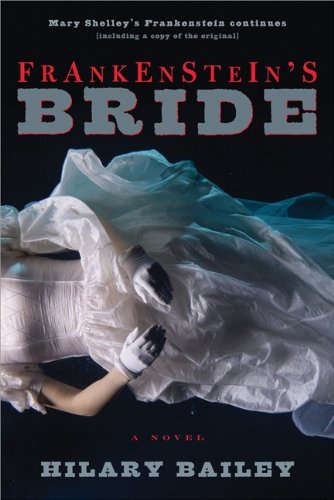Frankenstein’s Bride
London, 1826. Jonathan Goodall, a young linguist, befriends a brilliant but pensive scientist named Victor Frankenstein. Together they attempt to restore the speech of a mute opera singer, but Frankenstein’s strange attachment to the girl at first puzzles and then disturbs his new assistant. Friends and family warn Jonathan not to get too involved with the doctor’s work, but no one will explain why. Adding to his disquiet, Jonathan encounters a weird stranger lurking near Frankenstein’s home. Soon tragic events occur, and as Jonathan watches his mentor slide into despair and insanity he begins to wonder if the lurking stranger and the seductive singer are connected, and what key they hold to Frankenstein’s past. Obsessed with solving the mystery, Jonathan becomes entangled in a web of dark confessions, terrible secrets, and retribution for a great wrong committed not once, but twice.
Interpretive fiction is a controversial genre; unlike other works, Frankenstein’s Bride presents its take on a classic while both respecting the original and retaining its own author’s individuality. Bailey takes liberties with characterization and the suspension of disbelief, but the overall result is an intriguing page-turner rather than a watery knockoff. Unlike Mary Shelley’s novel, there is little philosophy, romance, or gothic terror; Bailey’s sequel is not so much a horror story as a mystery with a creepy climax. This is hindered somewhat since the reader already knows the secret, but our attention is held nonetheless. It’s not the original, but it’s no pallid exploitation either.
One last note: Frankenstein’s Bride is a short book; the size of the volume is padded by including Mary Shelley’s original. Frankly, this is unnecessary. Including the original with a speculative work only magnifies their differences, perhaps doing more harm than good. It would serve the reader best to enjoy both novels separately, which is exactly what this reviewer has done.










